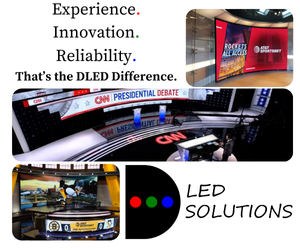Media organizations rethink storage security as content value rises

Subscribe to NCS for the latest news, project case studies and product announcements in broadcast technology, creative design and engineering delivered to your inbox.
The media and entertainment industry is experiencing a fundamental shift in how organizations approach content storage, with security concerns increasingly driving strategic decisions about where and how valuable media assets are preserved.
The heightened focus on security comes as media organizations face increasingly complex content protection requirements from major studios and rights holders. Major streaming platforms and content providers now mandate rigorous security audits that examine everything from geographic data separation to access controls, highlighting the critical nature of secure storage infrastructure.
The stakes are rising for content owners
“A unified, integrated approach to content security is crucial in broadcast workflows. By deploying end-to-end security solutions that address multiple potential vulnerabilities throughout the content delivery chain, broadcasters can minimize risks and ensure more effective protection against evolving threats,” said Mélanie Langlois, product manager of anti-piracy and content protection solutions of Viaccess-Orca.
The value of media content continues to climb, with global content spending reaching $247 billion in 2024 according to Ampere Analysis. This escalation in content value has made media organizations prime targets for cybersecurity threats. A single pre-release episode or film can represent millions in potential revenue, making robust security essential.
Industry experts note that traditional on-premises storage infrastructure while requiring more internal resources to manage, provides organizations with complete control over their security protocols and access management. This level of control becomes particularly critical for pre-release content and high-value assets where unauthorized access could have significant financial implications.
The push-pull of control
While cloud storage initially promised simplified operations, many organizations are now taking a more nuanced approach to where they store high-value content.
Recent data from storage provider Nasuni indicates that only 19% of companies currently utilize a hybrid cloud storage model, but a staggering 65% plan to implement one within the next year. This change allows organizations to maintain direct control over their most sensitive assets while leveraging cloud capabilities for more flexible workflows.
This shift toward hybrid approaches reflects a growing understanding that security requirements vary significantly based on content type and workflow stage.
Organizations are increasingly selective about which assets move to cloud environments, often keeping high-value pre-release content and master files within their direct control while utilizing cloud storage for distribution copies and archived material.
Security Service Level Agreements (SLAs) are emerging as a factor in storage decisions. Major content providers are implementing strict requirements around data redundancy, geographic separation and access controls. These requirements can become challenging to meet in pure cloud environments where organizations may have limited visibility into the physical location and handling of their assets.
“Vendors and third-party services play a crucial role in a broadcaster’s cybersecurity posture,” said Sam Peterson, COO of Bitcentral. “Each vendor’s security practices impact the overall risk profile, so broadcasters are increasingly adopting stringent vendor management policies.
Emerging security landscape inside M&E
The conversation around media storage security has evolved beyond simple backup and recovery. Organizations must now consider the following:
- Content segregation between different clients and projects
- Geographic distribution of backup copies
- Access control granularity
- Authentication protocols
- Audit trails for content access
- Recovery time objectives (RTOs)
- Data sovereignty requirements
“Regular audits provide insights into potential risks and reinforce a proactive approach to protecting content,” said Terri Davies, president of Trusted Partner Network. “Cybersecurity audits help identify vulnerabilities in systems, workflow and access controls, ensuring that security measures align with industry standards.”
The rise of artificial intelligence and machine learning in content production adds another layer of security considerations. As these technologies require rapid access to large content libraries, organizations must balance performance requirements with security protocols.
Looking ahead
Industry trends suggest the emphasis on security will continue to shape storage strategies.
Storage providers are responding by developing hybrid solutions that offer cloud-like flexibility with on-premises security controls. This includes subscription-based on-premises storage options that provide predictable costs while maintaining direct control over security infrastructure.
As content values continue to rise and distribution channels multiply, the industry’s approach to storage security will likely become even more sophisticated. Organizations are moving away from one-size-fits-all storage strategies toward more nuanced approaches that match security controls to content value and workflow requirements.
The key takeaway for media organizations is clear: storage decisions are no longer purely about capacity and cost.
Security considerations now play a central role in determining how content is stored, where it resides and who controls access to it.
Subscribe to NCS for the latest news, project case studies and product announcements in broadcast technology, creative design and engineering delivered to your inbox.





tags
Bitcentral, Cloud Storage, Cybersecurity for Broadcasters, media storage, Mélanie Langlois, Sam Peterson, security, Terri Davies, TPN, Trusted Partner Network, Viaccess-Orca
categories
Broadcast Engineering, Content Delivery and Storage, Heroes, Media Asset Management